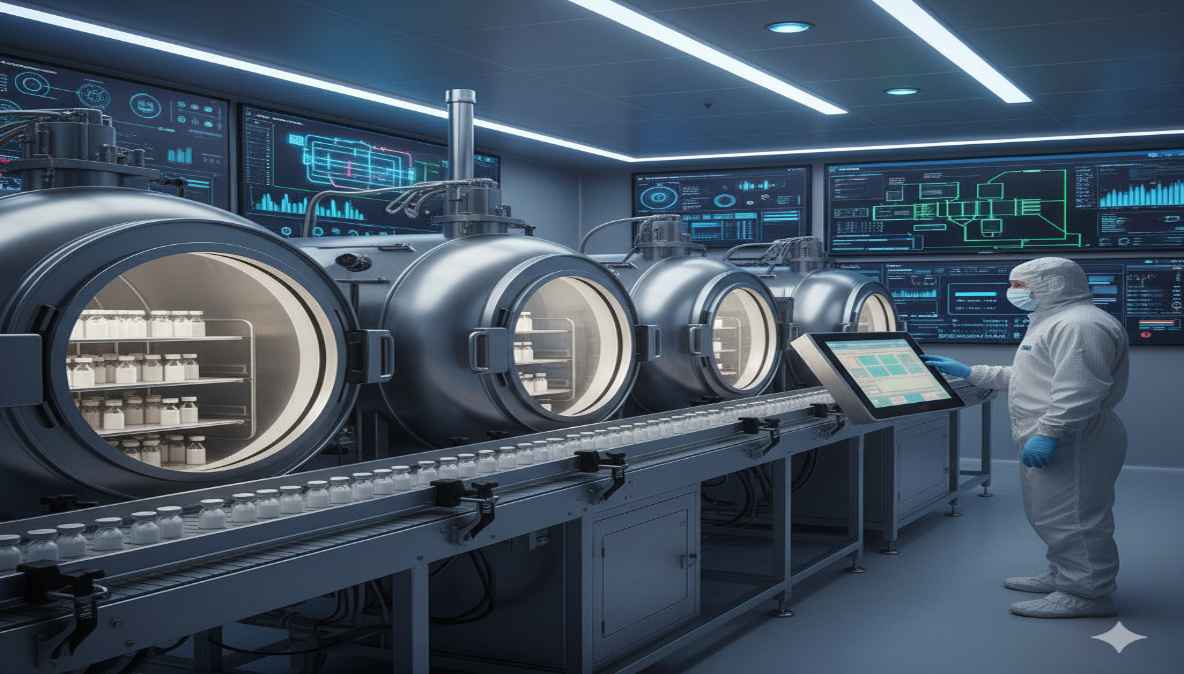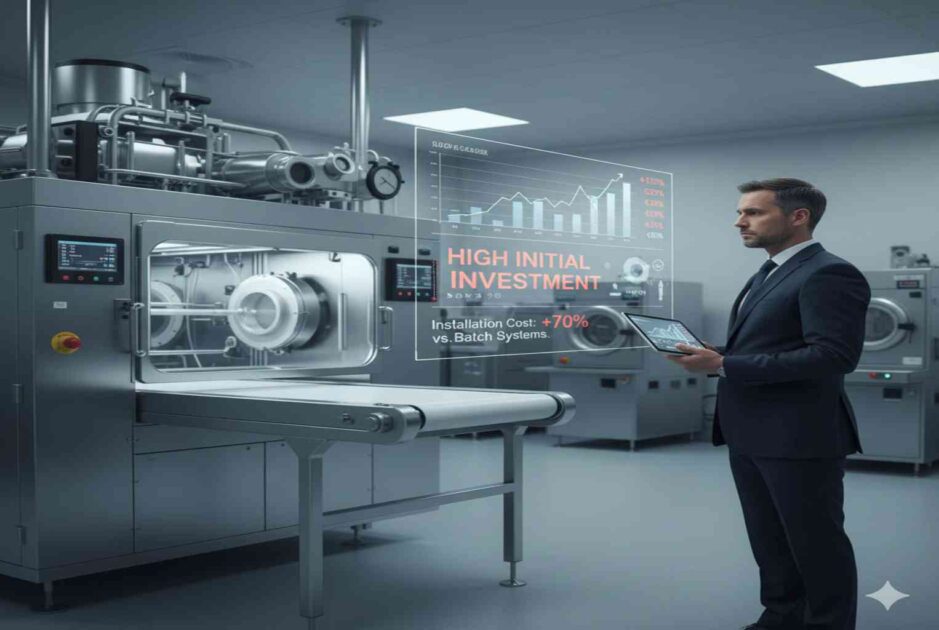Continuous Freeze-Drying Process in Pharmaceuticals: Benefits, Challenges, and Future Trends The pharmaceutical industry is witnessing a shift from traditional batch manufacturing to continuous processing. One of the most promising innovations in this field is the continuous freeze-drying process, which has the potential to revolutionize the way heat-sensitive drugs, vaccines, and biologics are preserved.
Unlike conventional batch freeze-drying, continuous lyophilization ensures higher efficiency, reduced costs, and improved product quality.
What Is Continuous Freeze-Drying?
Continuous freeze-drying is an advanced form of lyophilization where products move through the different phases of freezing, sublimation, and desorption in a continuous stream rather than being processed in fixed batches. This method is particularly suited for biopharmaceuticals that require consistent quality and strict regulatory compliance.
For an overview of the fundamentals, you can also explore the understanding the freeze-drying process guide.
Benefits of Continuous Freeze-Drying in Pharmaceuticals
- Increased Efficiency
Continuous systems reduce cycle time by optimizing primary and secondary drying stages, leading to faster throughput. - Improved Product Quality
With real-time monitoring tools such as Process Analytical Technology (PAT), continuous lyophilization ensures precise control of temperature and chamber pressure. - Cost Reduction
Continuous freeze-dryers consume less energy, making them more sustainable compared to conventional batch models. You can learn more in the article on energy efficiency in lyophilization. - Regulatory Compliance
The FDA and EMA encourage continuous processing to ensure higher reproducibility and consistent GMP freeze-drying standards.
Challenges of Continuous Freeze-Drying
While the benefits are clear, several challenges remain:
- High Initial Investment – Continuous systems have a higher installation cost compared to batch freeze-dryers.
- Process Complexity – Monitoring critical parameters like chamber pressure during primary drying is more complex in a continuous setting.
- Validation and Qualification – Ensuring proper lyophilizer qualification for regulatory approval can be time-consuming.
- Limited Industry Experience – Since this is a relatively new concept, standard operating protocols are still evolving.
Continuous vs Batch Freeze-Drying
| Factor | Batch Freeze-Drying | Continuous Freeze-Drying |
|---|---|---|
| Cycle Time | Long (up to 72 hours) | Shorter, optimized |
| Product Quality | May vary between batches | Consistent and reproducible |
| Energy Use | Higher | Lower (more sustainable) |
| Scalability | Limited | Easier to scale |
For further understanding, read about lyophilization vs freeze drying which explains key differences in techniques.
Future Trends in Continuous Lyophilization
- Integration of AI and IoT – Smart sensors for predictive maintenance and process monitoring alarms.
- Green Freeze-Drying – Development of energy-saving models to meet sustainability goals.
- Advanced PAT Tools – Using spectroscopic techniques for non-invasive quality checks.
- Expansion to Biologics & Vaccines – Wider adoption in biopharmaceutical applications.
Conclusion
The continuous freeze-drying process in pharmaceuticals marks a major step forward in drug manufacturing. By reducing cycle time, enhancing quality, and improving regulatory compliance, it paves the way for more efficient production of biologics, vaccines, and injectable drugs. While the technology is still evolving, its future looks promising, especially as the industry embraces digitalization, sustainability, and automation.
For deeper insights into system setup and efficiency, you can explore related guides such as lyophilization validation best practices and commissioning of lyophilization units.
FAQs related to continuous freeze-drying in pharmaceuticals
1. What is continuous freeze-drying in pharmaceuticals?
Continuous freeze-drying is a modern lyophilization method where products move through freezing, sublimation, and desorption stages in a continuous flow, unlike batch systems that process fixed loads.
2. How does continuous freeze-drying differ from batch freeze-drying?
Batch freeze-drying takes longer (up to 72 hours) and may result in variable quality between batches, while continuous systems offer shorter cycles, consistent product quality, and improved scalability.
3. What are the key benefits of continuous freeze-drying?
It reduces cycle time, improves product quality with real-time monitoring, lowers energy consumption, ensures regulatory compliance, and enhances scalability for pharmaceutical production.
4. Why is continuous freeze-drying important for biologics and vaccines?
Biologics and vaccines are heat-sensitive, requiring precise and reproducible drying conditions. Continuous freeze-drying provides stable, high-quality results critical for patient safety and efficacy.
5. What challenges are associated with continuous freeze-drying?
Challenges include high installation costs, complex process monitoring, regulatory validation requirements, and limited industry experience due to its relatively new adoption.
6. How does continuous freeze-drying reduce energy consumption?
By optimizing primary and secondary drying stages and eliminating downtime between batches, continuous systems consume less energy, supporting sustainable pharmaceutical manufacturing.
7. Is continuous freeze-drying accepted by regulatory authorities like the FDA and EMA?
Yes. Both FDA and EMA encourage continuous processing in drug manufacturing as it improves reproducibility, compliance, and product safety.
8. What role does Process Analytical Technology (PAT) play in continuous freeze-drying?
PAT tools allow real-time monitoring of critical parameters like chamber pressure and temperature, ensuring better control and consistent product quality.
9. What future trends are shaping continuous freeze-drying?
Trends include integration of AI and IoT for predictive monitoring, green freeze-drying models for energy savings, advanced PAT techniques, and wider application in biologics and vaccines.
10. Should pharmaceutical companies adopt continuous freeze-drying now?
While still evolving, continuous freeze-drying offers clear long-term benefits in efficiency, quality, and compliance. Companies adopting early may gain a competitive edge as industry standards mature

